Chanterelle Mushroom: A Comprehensive Overview
Chanterelle mushroom for sale online are one of the most sought-after wild mushrooms due to their delicate flavor, vibrant color, and versatile culinary uses. These mushrooms are highly prized by chefs and mushroom enthusiasts alike, thanks to their distinctive shape, fruity aroma, and rich, slightly peppery taste. In this article, we will explore the characteristics, culinary uses, health benefits, and ecological importance of Chanterelle mushrooms, as well as provide guidance on how to identify and forage them safely.
Chanterelle Mushroom
With a trumpet-like shape and a depression in the center of its cap, the chanterelle is another popular species of mushroom. Golden-hued, fleshy, and firm, they’re known for their apricot-like scent. Because they’re notoriously difficult to cultivate, foragers typically hunt for chanterelles in the wild. Note that a nonedible lookalike known as the false chanterelle (scientific name, Hygrophoropsis aurantiaca) grows throughout North America. Always forage with a trusted expert and root out the edible variety.
Chanterelles are commonly used in European cuisines, including French and Austrian. They’re also native to North America and particularly abundant in the Pacific Northwest from late spring to early fall. Use them to make fricassee or pair them with whole grilled salmon.
Exclusivity and Seasonality
One of the defining characteristics of Chanterelles is their limited availability. Found exclusively in the wild, these mushrooms cannot be cultivated commercially, adding to their allure. Their season is fleeting, making them all the more precious to chefs and home cooks alike. As autumn approaches, foragers eagerly scour forests and woodland areas in search of these elusive treasures, knowing that their window of opportunity is brief.
1. What Are Chanterelle Mushroom?
Chanterelle mushroom belong to the genus Cantharellus, a group of fungi that includes several species known for their distinctive appearance and flavor. These mushrooms are often found in forests and woodlands, typically in the summer and fall months. They are considered ectomycorrhizal fungi, meaning they form a symbiotic relationship with tree roots, exchanging nutrients in the soil.
1.1. Common Species of Chanterelle Mushroom
While there are several species within the Cantharellus genus, the most common and widely recognized species include:
- Cantharellus cibarius – The golden chanterelle, known for its bright yellow to orange color.
- Cantharellus tubaeformis – The slender, or winter chanterelle, with a more muted yellow or brownish hue.
- Cantharellus aurantiacus – The orange chanterelle, characterized by its vibrant orange color.
The golden chanterelle (Cantharellus cibarius) is the species most often associated with the term “chanterelle” in culinary contexts.
2. Physical Characteristics and Identification
Chanterelle mushrooms are often described as looking like small, funnel-shaped cups or trumpets. Their smooth, wavy caps, vibrant colors, and distinctive gills make them relatively easy to identify, even for beginner foragers. However, there are some key features to keep in mind when identifying them to avoid confusion with potentially toxic look-alikes.
2.1. Cap and Shape
The cap of a chanterelle is typically 2 to 5 inches in diameter and has a characteristic wavy, funnel-like shape. The edges of the cap often roll inwards, giving it a distinct, irregular appearance. The color of the cap can range from bright yellow to deep orange, with some variations showing more muted tones depending on species and growing conditions.
2.2. Gills and Texture
Unlike many mushrooms with distinct, straight gills, chanterelles have a unique feature—forked, or “false” gills. These gills are often described as looking like ridges or wrinkles, and they run down the stem, creating a smooth, continuous transition between cap and stem. The gills also tend to be closer together compared to those of other mushrooms, adding to the chanterelle’s distinctive appearance.
The texture of the chanterelle is firm, yet tender, with a slightly spongy quality that makes it easy to cut but still holds its shape when cooked.
2.3. Stem
Chanterelle mushroom have a stem that is often described as solid, cylindrical, and slightly tapered. The stem color typically matches the color of the cap, although it is often a little paler. The stem is also fibrous, helping to support the mushroom’s structure.
2.4. Smell and Taste
One of the key indicators of a chanterelle mushroom is its fruity, apricot-like aroma. When fresh, the mushroom exudes a subtle, sweet fragrance that is pleasant and earthy. The taste is slightly peppery but delicate, with hints of fruitiness, making it a highly desirable mushroom in culinary dishes.
3. Where to Find Chanterelle Mushrooms
Chanterelle mushrooms thrive in temperate forests, particularly in areas with rich, well-drained soil and an abundance of tree roots. They are often found in symbiosis with various types of hardwoods, such as oaks, beech, and birch, as well as conifers like pines and firs.
3.1. Seasonality and Habitat
Chanterelles typically fruit from late spring through the fall, depending on the region. In North America, they are most commonly found from June to September, although this can vary based on local climate and weather conditions.
Chanterelles favor moist environments with plenty of shade and dappled sunlight. After a rainy period, they can often be found growing near the base of trees, in mossy areas, or in the undergrowth of forests.
3.2. Geographical Range
Chanterelles are found throughout much of the world, though their specific range may depend on the species. Cantharellus cibarius is widespread in Europe and North America, while other species, like Cantharellus tubaeformis, are more common in cooler, northern regions.
If you’re interested in buying fresh or dried chanterelle mushrooms, you can buy Chanterelle Mushroom in Australia, buy Chanterelle Mushroom in UK, buy Chanterelle Mushroom in Europe, or buy Chanterelle Mushroom in USA from reputable suppliers who specialize in wild fungi.
4. Foraging for Chanterelle Mushroom
Foraging for wild chanterelle mushroom can be an exciting and rewarding activity, but it requires caution and proper knowledge to avoid toxic look-alikes. There are a few key tips to keep in mind:
4.1. Identifying Toxic Look-Alikes
The most common toxic mushroom that resembles chanterelles is the Jack-O’-Lantern mushroom (Omphalotus olearius). These mushrooms have similar color and shape but are distinguishable by their true gills (as opposed to chanterelles’ false gills) and their ability to glow in the dark. Additionally, Jack-O’-Lanterns grow in clusters, while chanterelles grow individually or in small groups.
4.2. Ethical Foraging
When foraging for chanterelles, it’s essential to respect nature and forage responsibly. Only harvest mushrooms that you are confident in identifying, and avoid over-harvesting a patch, as this can disrupt the local ecosystem. It is also recommended to use a knife to cut mushrooms at the base of the stem rather than pulling them from the ground, which can damage the mycelium and hinder future growth.
5. Culinary Uses of Chanterelle Mushrooms
Chanterelles are prized in kitchens around the world for their delicate texture and rich flavor. Their versatility makes them ideal for a variety of dishes, from simple sautés to more elaborate sauces and soups.
5.1. Flavor Profile
Chanterelles are known for their mild, slightly fruity taste with hints of pepper and earthiness. Their delicate flavor pairs well with both simple and complex dishes, complementing a wide variety of ingredients.
5.2. Cooking Techniques
- Sautéing: One of the simplest ways to cook chanterelles is by sautéing them in butter or olive oil. This method brings out their natural flavor and allows them to retain their tender texture.
- Soups and Stews: Chanterelles can be added to soups and stews for an earthy, rich depth of flavor.
- Pasta and Risotto: Chanterelles make an excellent addition to creamy pasta sauces or risotto, adding both flavor and texture.
- Grilling: Large chanterelles can be grilled for a smoky flavor, perfect for pairing with meats or vegetables.
5.3. Pairing with Other Ingredients
Chanterelles pair well with other forest ingredients like wild greens, garlic, shallots, and thyme. They also complement creamy dishes like sauces, soups, and scrambled eggs. Additionally, their delicate flavor works well with meats such as chicken, pork, or beef.
6. Health Benefits of Chanterelle Mushrooms
Beyond their culinary value, chanterelle mushrooms are also known for their potential health benefits. They are a good source of essential nutrients, including vitamins, minerals, and antioxidants.
6.1. Nutritional Value
Chanterelles are low in calories but rich in dietary fiber, protein, and vitamins. They are particularly high in Vitamin D, which supports bone health and immune function, and contain significant amounts of Vitamin C, a powerful antioxidant that promotes skin health and boosts the immune system.
6.2. Antioxidants and Anti-inflammatory Properties
Chanterelles are rich in antioxidants, which help combat oxidative stress and reduce inflammation in the body. These antioxidants include compounds such as polyphenols and carotenoids, which protect cells from damage and may contribute to long-term health benefits.
6.3. Immune System Support
The beta-glucans found in chanterelles may have immune-boosting properties, helping to enhance the body’s natural defense mechanisms against infections and illnesses.
7. Ecological Importance of Chanterelle Mushrooms
Chanterelle mushrooms play an important role in forest ecosystems as ectomycorrhizal fungi. These mushrooms form symbiotic relationships with the roots of trees, exchanging nutrients that benefit both organisms.
7.1. Nutrient Cycling
As mycorrhizal fungi, chanterelles contribute to the cycling of nutrients in the forest soil. They help trees absorb minerals such as nitrogen and phosphorus, while the fungi receive sugars produced by the tree through photosynthesis. This mutualistic relationship helps maintain a healthy and thriving forest ecosystem.
7.2. Habitat and Biodiversity
Chanterelles are also a key species in their habitats, providing food for various animals, including deer, squirrels, and birds. Their presence in a forest is often an indicator of a healthy, biodiverse environment.
Where to buy Chanterelle mushroom online.
- Buy Chanterelle mushroom in Germany
- Buy Chanterelle mushroom in Ireland
- Buy Chanterelle mushroom in Queensland
- Buy Chanterelle mushroom in South Australia
- Buy Chanterelle mushroom in Western Australia
- Buy Chanterelle mushroom in Canterbury
- Buy Chanterelle mushroom in Netherlands
- Buy Chanterelle mushrooms in Norway
- Buy Chanterelle mushroom in Poland
- Buy Chanterelle mushroom in Spain
- Buy Chanterelle mushrooms in Sweden
- Buy Chanterelle mushroom in Switzerland
- Buy Chanterelle mushroom in California
- Buy Chanterelle mushroom in Texas
- Buy Chanterelle mushroom in Florida
- Buy Chanterelle mushroom in New York
- Buy Chanterelle mushroom in Illinois
- Buy Chanterelle mushroom in Pennsylvania
- Buy Chanterelle mushroom in Ohio
- Buy Chanterelle mushroom in Georgia
- Buy Chanterelle mushroom in Michigan
- Buy Chanterelle mushroom in New South Wales
- Buy Chanterelle mushroom in Victoria
- Buy Chanterelle mushrooms in Tasmania
- Buy Chanterelle mushroom in North Carolina
- Buy Chanterelle mushrooms in Austria
- Buy Chanterelle mushroom in Italy
- Buy Chanterelle mushroom in Alaska
- Buy Chanterelle mushrooms in Montana
- Buy Chanterelle mushroom in New Mexico
- Buy Chanterelle mushroom in Arizona
- Buy Chanterelle mushroom in Nevada
Conclusion
Chanterelle mushrooms are a treasure of the wild world, offering rich flavors, health benefits, and ecological importance. Their unique appearance, delightful taste, and nutritional value make them a prized addition to any dish. Whether you’re an experienced forager, a culinary enthusiast, or simply someone curious about wild fungi, understanding the significance of chanterelle mushrooms opens up a world of flavor and natural wonder.
If you’re looking to buy fresh or dried chanterelle mushrooms, you can buy Chanterelle Mushroom in Australia, buy Chanterelle Mushroom in UK, buy Chanterelle Mushroom in Europe, or buy Chanterelle Mushroom in USA from trusted online retailers and local suppliers.
| Chanterelle Mushroom | 1kg, 3kg, 5kg, 10kg |
|---|
Be the first to review “Chanterelle Mushroom” Cancel reply
Related products
Mushrooms
Mushrooms
Mushrooms
Mushrooms

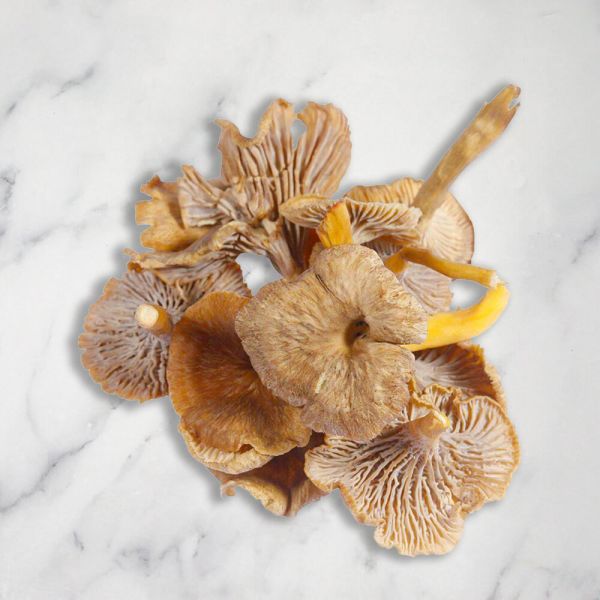
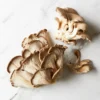
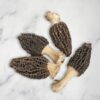
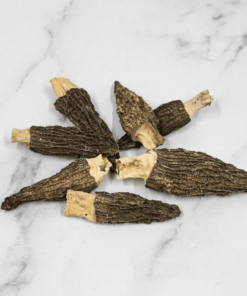
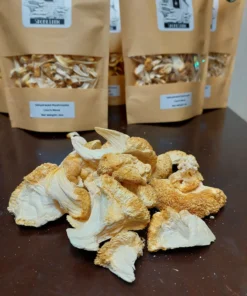
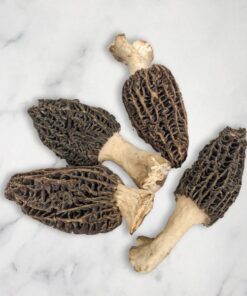
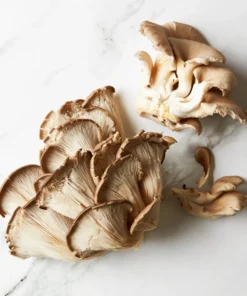
Reviews
There are no reviews yet.